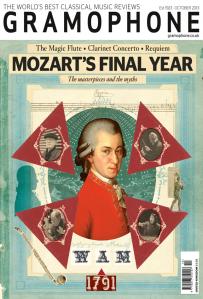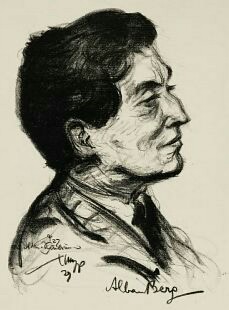
Christian Lindberg is a Swedish trombonist, conductor and composer,
Dame Mitsuko Uchida, DBE, born 20 December 1948) is a classical pianist and conductor, born in Japan and naturalised in Britain, particularly noted for her interpretations of Mozart and Schubert.
James Ehnes, is a Canadian concert violinist.
Christian Tetzlaff is a German violinist.

Elisabeth Batiashvili, professionally known as Lisa Batiashvili, is a prominent Georgian violinist active across Europe and the United States. A former New York Philharmonic artist-in-residence, she is acclaimed for her "natural elegance, silky sound and the meticulous grace of her articulation." Batiashvili makes frequent appearances at high-profile international events; she was the violin soloist at the 2018 Nobel Prize concert.
Jennifer Higdon's Concerto for Violin and Orchestra was written in 2008. The work was jointly commissioned by the Indianapolis Symphony Orchestra, the Toronto Symphony Orchestra, the Baltimore Symphony Orchestra, and the Curtis Institute of Music. It was composed for the violinist Hilary Hahn and was given its world premiere by Hahn and the Indianapolis Symphony Orchestra under the conductor Mario Venzano on February 6, 2009. The piece was later awarded the 2010 Pulitzer Prize for Music.
The Concerto for Orchestra is an orchestral composition in five movements by the American composer Jennifer Higdon. The work was commissioned by the Philadelphia Orchestra with contributions from the National Endowment for the Arts, the Philadelphia Music Project, and Peter Benoliel. It was premiered at the Kimmel Center for the Performing Arts in Philadelphia June 12, 2002, with conductor Wolfgang Sawallisch leading the Philadelphia Orchestra.
The Violin Concerto is a concerto for violin and orchestra in three movements by the American composer Elliott Carter. The work was jointly commissioned by the San Francisco Symphony and the violinist Ole Bøhn. It was completed February 26, 1990 in Waccabuc, New York, and was premiered May 2, 1990 in San Francisco, with conductor Herbert Blomstedt leading Bøhn and the San Francisco Symphony. The piece won the 1994 Grammy Award for Best Classical Contemporary Composition.
The Concerto for Orchestra is an orchestral composition by the American composer Marc Neikrug. The work was commissioned by the New York Philharmonic and was completed in May 2011. It was given its world premiere by the New York Philharmonic under the conductor Alan Gilbert at Avery Fisher Hall on April 26, 2012. The concerto is dedicated to Alan Gilbert.
The Oboe Concerto is a composition for solo oboe and orchestra by the American composer John Harbison. The work was commissioned by the San Francisco Symphony for its principal oboist William Bennett. It was completed on October 18, 1991, and was given its world premiere by Bennett and the San Francisco Symphony under the conductor Herbert Blomstedt in 1992.
The Clarinet Concerto is a composition for solo clarinet and orchestra by the Finnish composer Magnus Lindberg. It was written for the Finnish clarinetist Kari Kriikku. The piece was given its world premiere in Finlandia Hall, Helsinki, on September 14, 2002 by Kari Kriikku and the Finnish Radio Symphony Orchestra under the direction of Jukka-Pekka Saraste. The composition is one of Lindberg's most frequently performed works.
The Cello Concerto No. 2 is the second cello concerto by the Finnish composer Magnus Lindberg. It was commissioned by the Los Angeles Philharmonic in June 2013 to fill the planned premiere date of Oliver Knussen's then delayed Cello Concerto. The work was first performed in the Walt Disney Concert Hall, Los Angeles, on October 18, 2013 by the Finnish cellist Anssi Karttunen and the Los Angeles Philharmonic under the direction of Esa-Pekka Salonen.
Souvenir is a composition for chamber orchestra by the Finnish composer Magnus Lindberg. The work was commissioned by the New York Philharmonic, for which Lindberg was then composer-in-residence. It was given its world premiere on November 19, 2010 at Symphony Space, New York City, by the New York Philharmonic under the direction of Alan Gilbert. The piece was written in memoriam for Lindberg's friend and fellow composer Gérard Grisey.
The Concerto for Orchestra is an orchestral composition by the Finnish composer Magnus Lindberg. The work was commissioned by the BBC and was composed between 2002 and 2003. It was given its world premiere by the BBC Symphony Orchestra under the direction of Jukka-Pekka Saraste on September 30, 2003 at the Barbican Centre, London.
The Violin Concerto, subtitled Concentric Paths, is a composition for solo violin and chamber orchestra by the British composer Thomas Adès. The work was jointly commissioned by the Berliner Festspiele and the Los Angeles Philharmonic with funding from the philanthropists Lenore and Bernard Greenberg. It was composed for the violinist Anthony Marwood, who performed the world premiere with the Chamber Orchestra of Europe in Berlin on September 4, 2005.
Kraft is a composition for solo ensemble, electronics, and orchestra by the Finnish composer Magnus Lindberg. The work was commissioned by the Helsinki Festival and was first performed on September 4, 1985 by the Toimii ensemble and the Finnish Radio Symphony Orchestra under the direction of Esa-Pekka Salonen. The piece was awarded the International Rostrum of Composers in 1986 and won the Nordic Council Music Prize in 1988.
The Concerto for Piano and Orchestra is the first piano concerto by the Finnish composer Magnus Lindberg. The work was commissioned by the Helsinki Festival on September 4, 1991 and completed in 1994. It is dedicated to the pianist Paul Crossley.
Fresco is an orchestral composition by the Finnish composer Magnus Lindberg. The work was commissioned by the Los Angeles Philharmonic. Its world premiere was given in Los Angeles on March 12, 1998 by the Los Angeles Philharmonic under the direction of Esa-Pekka Salonen, to whom the piece is dedicated.
Sculpture is an orchestral composition by the Finnish composer Magnus Lindberg. The music was commissioned by the Los Angeles Philharmonic with support from the Koussevitzky Music Foundation to celebrate the orchestra's inaugural season at the Walt Disney Concert Hall. Its world premiere was given by the Los Angeles Philharmonic under the direction of Esa-Pekka Salonen on October 6, 2005.











